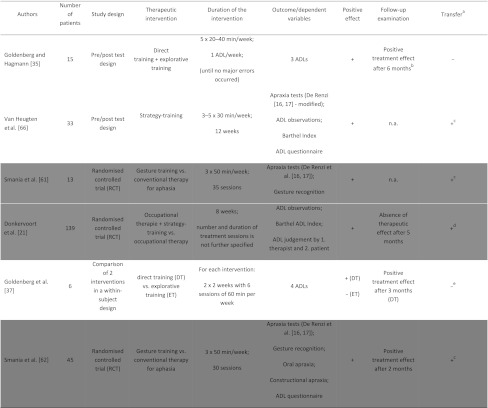Table 2.
Summary of all published group studies examining the efficacy of therapeutic interventions for apraxia (until April 2011; note that studies are ordered by publication year)

Randomized controlled trials (RCTs) are highlighted in grey
aEntries in this column indicate whether the positive treatment effect was transferred to other tasks, objects, or environments
bDuring the follow-up examination, only patients who continued ADL training at home showed a positive treatment effect
cAs patients improved on ADL measures and/or Barthel Index, it can be assumed that the positive treatment effect occurred not only for the specifically trained tasks but that a transfer to other tasks took place
dBased on a reanalysis of the data by Donkervoort et al. [21], Geusgens and colleagues (2006) found indications for a transfer of the positive treatment effects of the strategy training to untrained tasks [28]
eAt the end of the treatment, Goldenberg et al. [37] tested the same activities with a different set of objects and reported increased error rates when compared to the test with the objects used during the training sessions. Thus, the treatment effect of the direct training is very specific and cannot be transferred to a novel environment, i.e., a different set of objects
